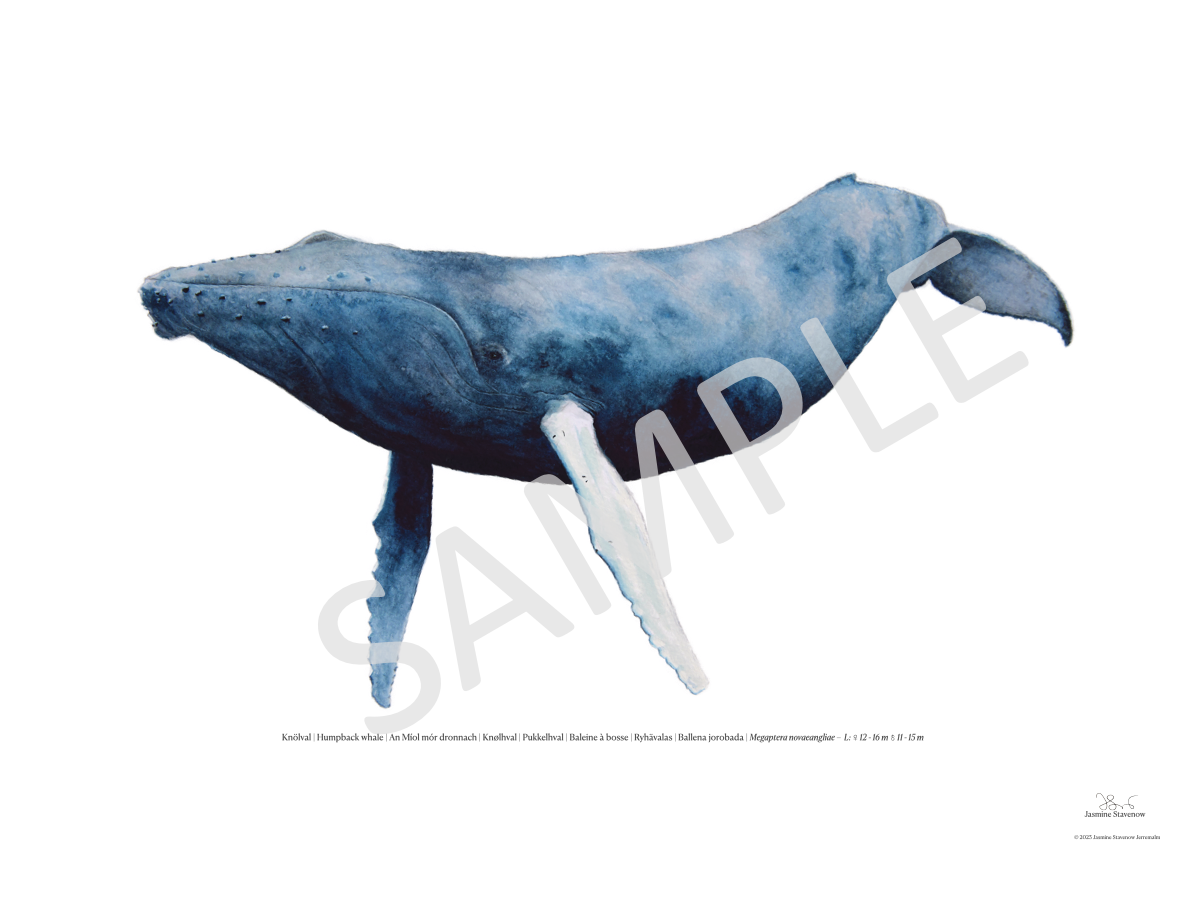Whales et al. ART
Knölval | Humpback whale
Knölval | Humpback whale
Couldn't load pickup availability
Knölval | Humpback whale - Poster print
Water colour illustration - Global Species collection
Size: A3 paper
High quality silk paper (200gsm)
Below the water colour illustration, there is a single text line with knowledge about the species. You'll find the common species names in multiple languages and its latin species name (see below) and also information about the size of the species, for females and males.
Swedish: Knölval
English: Humpback whale
Gaelige: An Míol mór dronnach
Norwegian: Knølhval
Danish: Pukkelhval
French: Baleine à bosse
Finnish: Ryhävalas
Spanish: Ballena jorobada
Latin species name: Megaptera novaeangliae
About Humpback whales
The Humpback whale is a baleen whale, and adults range in length between 14-17m. Compared to other whales, it has disproportionately large flippers (pectoral fins), reaching up to one third of its body length in size. They are a species found worldwide, and their migration patterns, and their appearance in some degrees, differ between geographical regions. For example, in the North Atlantic Humpback whales are distinguishable for their white flippers and migrate towards arctic polar regions during the northern hemisphere summer. In the southern hemisphere, their flippers are less white, and they migrate towards antarctic polar regions during the southern hemisphere summer.
The Global Species Collection aims to highlight species that are familiar to many, as they are widely distributed and in many places numerous. In several geographical regions, they have played, and still play, important roles in human cultures, and they have names in many languages. They are some of the most loved and charismatic species, still they hold many secrets left for science to unveil.
Share










